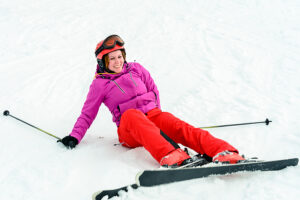Thumb Sprains Treated in Arlington, VA

A thumb sprain occurs when a ligament that supports the thumb is stretched beyond its normal capacity, sometimes to the point of tearing. Most thumb sprains affect the ulnar collateral ligament (UCL) on the inside of the knuckle joint. The most common cause of this type of injury is a strong force that bends the thumb backward, which can occur during a fall onto an outstretched hand—especially when holding a ski pole. In addition to skiers, athletes who play sports that involve catching, throwing or passing a ball are particularly at risk.
What Are the Symptoms of a Thumb Sprain?
Depending on the severity of the damage, a thumb sprain may or may not be painful. Some people experience a feeling of looseness or instability in their thumb and have difficulty grasping items between their thumb and forefinger. Other possible symptoms include tenderness, bruising and swelling at the base of the thumb.
A thumb sprain might sound like a simple injury, but it is important to seek medical attention if the pain and other symptoms do not improve quickly. An accurate diagnosis and prompt treatment are important to prevent complications, such as chronic pain, joint instability and early-onset arthritis. In Arlington, Virginia, you can have your thumb sprain evaluated by an experienced hand and wrist specialist at Nirschl Orthopaedic Center.
How Is a Thumb Sprain Treated?
Treatment for a thumb sprain can vary based on whether the UCL is partially or fully torn and whether the injury is accompanied by an avulsion fracture, which occurs when a torn tendon pulls away a small piece of bone. A mild to moderate sprain can be treated with RICE therapy, which includes rest, ice applications, compression and elevation. Additionally, the thumb may be immobilized with a bandage, cast or splint to help ensure proper healing. Simple stretches can be performed to help prevent thumb joint stiffness due to prolonged immobilization.
A severe thumb sprain may require surgical repair. In general, surgery involves reconnecting the torn ligament to the bone and, if necessary, reattaching the bone fragment with a special anchor.
If you think you might have sprained your thumb, you should have your injury evaluated right away. You can request a consultation with a hand and wrist specialist at Nirschl Orthopaedic Center by calling (703) 525-2200.
